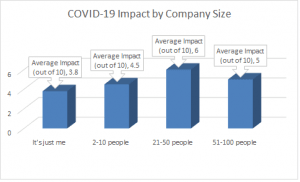
In such circumstances, an entity may conclude that its financial statements would provide more relevant information if both the asset and the statement of comprehensive income liability were measured at fair value through profit or loss. Contrary to net income, other comprehensive income is income (gains and losses) not yet realized. Some examples of other comprehensive income are foreign currency hedge gains and losses, cash flow hedge gains and losses, and unrealized gains and losses for securities that are available for sale. One of the critical components of Other Comprehensive Income (OCI) is unrealized gains and losses on investments.

Accumulated Other Comprehensive Income: Balance Sheet Example
Examples of items recognised in OCI that may be reclassified to profit or loss are foreign currency gains on the disposal of a foreign operation and realised gains or losses on cash flow hedges. Those items that may not be reclassified are changes in a revaluation surplus under IAS 16® , Property, Plant and Equipment, and actuarial gains and losses on a defined benefit plan under IAS 19, Employee Benefits. Unrealized gains and losses relating to a company’s pension plan are commonly presented in accumulated other comprehensive income (OCI). A defined benefit plan, for example, requires the employer to plan for specific payments to retirees in future years. If the assets invested in the plan are not sufficient, the company’s pension plan liability increases. A firm’s liability for pension plans increases when the investment portfolio recognizes losses.
The Big Accounting Rule Change in 2016 and its Impact on OCI
- In regards to taxes, it is permitted to report other comprehensive income after taxes, or one can report before taxes as long as a single income tax expense line item is included at the end of the statement.
- Like other publicly-traded companies, Ford Motor Company files quarterly and annual reports with the SEC.
- Reclassification adjustments in the context of Other Comprehensive Income (OCI) refer to the transfer of specific items from OCI to net income.
- It also includes cash flow hedges, which can change in value depending on the securities’ market value, and debt securities transferred from ‘available for sale’ to ‘held to maturity’—which may also incur unrealized gains or losses.
- This is especially true of the principles behind reclassification which includes the logic of when and which OCI items should be reclassified.
- But it’s not just unrealized gains (or losses) on investment securities that OCI attempts to capture.
- Other comprehensive income can consist of gains and losses on certain types of investments, pension plans, and hedging transactions.
The rationale is that exchange rate fluctuations are often temporary and can reverse over time, so recognizing them in net income could distort the company’s profitability and financial performance. The statement of profit or loss and OCI is designed to be useful to a broad range of users. In particular, users will often attempt to assess the future net cash inflows of an entity from this statement which should be understandable and comparable. An entity can choose to present a single statement of profit or loss and OCI or may present a statement of profit or loss and a statement of OCI separately.
- The impacts are spread throughout the balance sheet, from Goodwill adjustments to Retirement obligations to the value of Cash and Cash Equivalents.
- Understanding the drivers of a company’s daily operations is going to be the most important consideration for a financial analyst, but looking at OCI can uncover other potentially major items that impact a company’s bottom line.
- On this basis only bridging and mismatch gains and losses should be included in OCI and be reclassified from equity to SOPL.
- As a result, it can be argued that improving the presentation of OCI would not provide additional relevant information for their analysis.
- In this respect, OCI can help an analyst get to a more accurate measure of the fair value of a company’s investments.
- The difference had to do with OCI and the unrealized losses that took place in its investment portfolio.
- OCI’s components, such as unrealized gains and losses, foreign currency translation adjustments, and pension plan revaluations, can significantly influence a company’s financial stability and future performance.
Tax Treatment of Items Reported in OCI

These adjustments occur https://www.bookstime.com/ when the realized gains or losses previously recorded in OCI become actual and need to be reflected in the income statement. The purpose of reclassification is to ensure that financial items are recorded in the income statement in the period in which the underlying economic event affects the company’s operational results. The tax implications of items reported in OCI are critical for understanding a company’s future tax obligations and financial position.

Misunderstandings in Interpreting OCI
- At the end of the statement is the comprehensive income total, which is the sum of net income and other comprehensive income.
- However, in order to understand an entity’s financial performance for the period, an analysis of all income and expenses is required including income and expenses in OCI.
- Examples of these differences can demonstrate just how big the impact can be on a firm.
- The statement should be classified and aggregated in a manner that makes it understandable and comparable.
- Other Comprehensive Income tracks the impact of unrealized gains and other effects to Shareholder’s Equity from year to year which isn’t accurately captured solely by Net Income + Retained Earnings.
First, it how is sales tax calculated helps in presenting a more accurate picture of a company’s financial status by reflecting the current market conditions and the potential impact on the company’s investment portfolio. Second, it smoothens the income statement by excluding volatile fluctuations that have not been realized through actual transactions. This approach provides a clearer view of the company’s operating performance, separate from its investment activities. The key difference between net income and comprehensive income is the inclusion of items that have not been realized in the form of cash or transactions affecting net income.
Pension Plans
- The FASB’s stated goal, in general, is to issue guidance «to improve the comparability, consistency, and transparency of financial reporting.» To accomplish this, it has sought to «increase the prominence of items reported in other comprehensive income.»
- If reclassification ceased, then there would be no need to define profit or loss, or any other total or subtotal in profit or loss, and any presentation decisions could be left to specific IFRS Accounting Standards.
- Pension plan gains and losses are key components of OCI, representing the financial effects of retirement benefit plans that are not realized in the current period and are separate from the company’s core operations.
- However, the effective portion of gains or losses on hedges of net investments in foreign operations per IFRS 9 are reclassified as are the effective portion of gains and losses on hedging instruments in a cash flow hedge.
- Non-owner sources of equity, reflected in Other Comprehensive Income (OCI), are changes in a company’s equity that do not result from transactions with shareholders, such as issuing stock or distributing dividends.
- To compensate for this, the Financial Accounting Standards Board (FASB) requires companies to use universal measurements to help provide investors and analysts with clear, easily accessible information on a company’s financial standing.
It is argued that reclassification protects the integrity of the statement of profit or loss and provides users with relevant information about a transaction that occurred in the period. Additionally, it can improve comparability where IFRS Accounting Standards permit similar items to be recognised in either profit or loss or OCI. Other comprehensive income, or OCI, consists of items that have an effect on the balance sheet amounts, but the effect is not reported on the company’s income statement. Instead, these changes are reported on the statement of comprehensive income along with the amount of net income from the income statement. Investment purchases that a company make should reflect the historical cost and not the actual value of the asset on the balance sheet.
